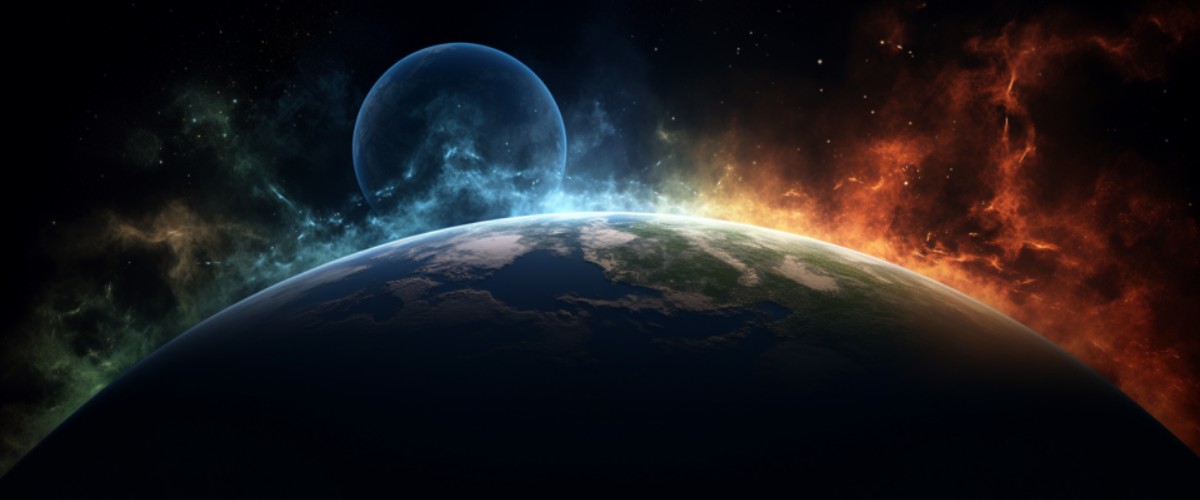Approximately 2.4 billion years ago, Earth witnessed a groundbreaking event – the substantial increase of oxygen in its atmosphere. Known as the Great Oxygenation Event (GOE), this phenomenon irrevocably altered our planet’s physical and biological landscapes, sowing seeds for the development of complex life forms and sculpting the Earth as we know it today.
Background
Pre-Oxygenated Earth: A Different World
- Anaerobic Dominance: Prior to the GOE, life on Earth thrived without oxygen, with anaerobic organisms ruling the biological kingdom.
- Early Cyanobacteria: The emergence of cyanobacteria, capable of photosynthesis, set the stage for the oxygenation event.
- Biological Innovation: Through photosynthesis, cyanobacteria began releasing oxygen into the atmosphere and oceans.
Architects of Atmospheric Change: Cyanobacteria
- Pioneering Oxygen Producers: These microscopic organisms harnessed sunlight, converting water and carbon dioxide into glucose and oxygen.
- Stromatolites: Cyanobacteria formed stromatolites, layered structures that provide some of the oldest fossil evidence of life on Earth.
Major Happenings
Key Moments Culminating in Oxygen Surge
- Bacterial Proliferation: Vast expansions of cyanobacteria populated the world’s oceans.
- Initial Oxygen Sinks: Initially, released oxygen bound with iron and other elements in the oceans.
- Iron Band Formation: Oxidation of iron led to the creation of distinctive banded iron formations in sedimentary rocks.
- Oxygen Overflow: Eventually, the oxygen sinks filled, allowing excess oxygen to pervade the atmosphere.
Immediate Outcomes
Earth Experiences a Radical Shift
- Mass Extinctions: The influx of oxygen was toxic to anaerobic organisms, leading to massive die-offs.
- New Environmental Norm: The presence of oxygen began shaping new ecological and atmospheric structures.
- Biodiversity Explosion: Over time, oxygen allowed for the evolution of aerobic organisms and more complex life forms.
Long-term Impact
Oxygen: Shaping Life and Land
- Evolutionary Pathways: The availability of oxygen enabled the development of aerobic respiration, propelling the evolution of complex, multicellular organisms.
- Emergence of Ozone: Oxygen accumulation led to the formation of the ozone layer, shielding Earth from harmful UV radiation.
- Environmental Sculpting: The introduction of oxygen transformed the chemical composition of oceans and rocks, influencing geological processes.
Milestones Stemming from Oxygenation
- Eukaryotic Emergence: Around 2 billion years ago, eukaryotic cells emerged, eventually giving rise to complex life, including humans.
- Animal Evolution: Oxygen played a crucial role in the evolution and diversification of animal life during the Cambrian Explosion, approximately 541 million years ago.
- Development of Terrestrial Life: Oxygen availability supported the expansion of life from the oceans onto land.
Conclusion
The GOE, a seemingly serendipitous outcome of microbial metabolic activities, unveiled a new chapter in Earth’s tale, paving the way for the flourishing of intricate ecosystems and intelligent life, such as humans. It beckons a reflection upon our intrinsic connection with microscopic entities and ancient events, epitomising the interwoven tapestry of life and planetary history. In contemporary dialogues about environmental and biological conservation, the profound impacts of these ancient bacteria underpin discussions about life’s delicate dependence on our planet’s atmospheric conditions. Thus, the rise of oxygen stands as a stark reminder of the intricate balance that sustains life on our blue planet and the cryptic power held by seemingly inconspicuous organisms in shaping the course of Earth’s history and, subsequently, our own existence.








